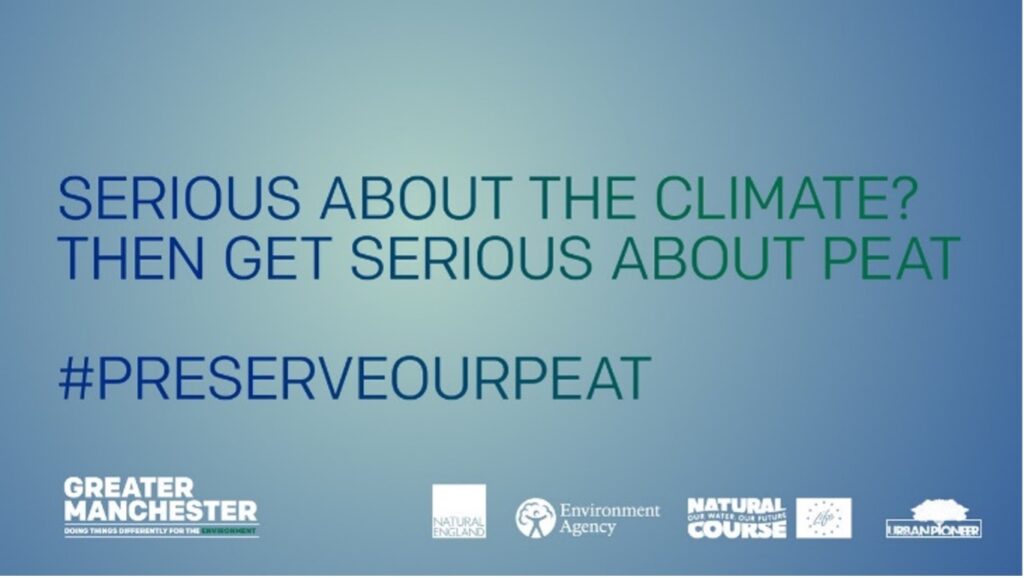We need to get serious about peat
Through the Defra Greater Manchester Peat Pilot project, Natural England has mapped the size and condition of peatlands across our city region. This key research highlights the huge potential of peat in helping us meet net zero emissions by 2038.
In 2019 / 2020, Defra commissioned five Peat Pilots across England to improve our understanding of some of the key issues affecting these internationally important habitats. Here in Greater Manchester, our Pilot focused on the role of peatlands in the fight against climate change and how these important assets can be managed to help the city region achieve net zero carbon.

Peat’s untapped potential
Peatlands are the world’s largest terrestrial carbon store, locking away an estimated 550 gigatonnes of carbon globally – that’s more carbon than is stored in all the world’s forests combined! In Greater Manchester, we are very fortunate to have a significant peatland resource – around 17,500 hectares in total – right on our doorstep, and we are in the unique position if having both upland and lowland peatlands in our city region. These peatlands are a huge potential asset in our fight against climate change, if managed to good condition.
Unfortunately, historic peat extraction and ongoing drainage has disturbed the waterlogged, anoxic conditions of most of our peatlands, disrupting their ability to store carbon and releasing potent greenhouse gases into the atmosphere. Prior to the GM Peat Pilot, it was very difficult to understand the scale of this problem or quantify its impact on the city region’s emissions targets. So, the Defra Peat Pilot aimed to fill this knowledge gap and outline how restoring our peatlands could help us achieve net zero.
Our approach
Natural England answered these questions by mapping all the upland and lowland peatlands in Greater Manchester using a combination of aerial photography and visits to some key peatland sites. Land use is a major factor in determining emissions from peatlands, so, working alongside university academics and peatland experts across the North West, the team was able to estimate the total greenhouse gas emissions from peatlands across Greater Manchester. Using case studies, the team could also estimate the carbon savings achievable from converting high-intensity farming to more sustainable agricultural practices and quantify the impact of wildfire on carbon emissions in the uplands.
Key outcomes
- Overall, GM peatlands are emitting in the region of 180,000 tonnes of CO2equivalents every year, equivalent to the annual emissions of around 10,000 UK households.
- Half of these emissions were coming from a single site, the lowland peat mass of Chat Moss. Almost 90%of the Chat Moss emissions were from intensive land uses that rely on peatland drainage.
- Moving these intensive land uses to wetter forms of agriculture, including carbon farming, could reduce these emissions by up to 90%.
- In the uplands, wildfire is a significant problem, but risk and damage from fire can be greatly reducedby improving the condition of our upland bogs.
Get involved
Understanding the importance of our peatlands and the crucial role they can play in the battle against climate change is a fantastic first step. But there is much more to be done. In Greater Manchester, the findings of the Peat Pilot are being used to inform our Local Nature Recovery Strategy, influence planning policy and help attract investment in peatland restoration through projects like Natural Course, GM Wetlands and Carbon Landscape.
But we cannot do this alone. To get involved, why not volunteer with one of the many organisations already doing fantastic work to restore our precious peatlands?
Are you a business or land owner wanting to invest in our local environment? Keep a look out for opportunities like the Greater Manchester Environment Fund, coming soon!




